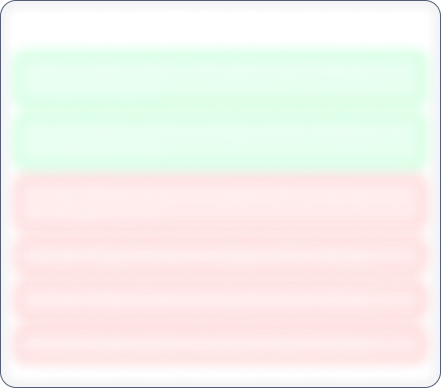Year End Sale 50% off
Swan Defence and Heavy Industries

No Data Available
Investor Sentiment
Swan Defence and Heavy Industries Share price and Fundamental Analysis
Key Metrics
Stock Returns
Stock Heatmap

No Stocks
Smart Score

Unlock Smart Score
See Detailed Analysis & Insights


Unlock Insights
See Detailed Analysis & Insights
Technicals
Returns Calculator
If you would have investedResearch Report
No Research Report
Corporate Action
Financials
Key Ratios
ROE
Avg ROE (3 Yrs) : NaN%
ROCE
Avg ROCE (3 Yrs) : NaN%
ROA
Avg ROA (3 Yrs) : NaN%
NPM
Avg NPM (3 Yrs) : NaN%
Dividend History
5 Year FactSheet
Documents

No Data Available
News
Swan Defence and Heavy Industries Management and History
Company Management


Unlock Management Data
See Detailed Analysis & Insights
Company History
Reliance Defence and Engineering Limited (RDEL) formerly Pipavav Defence and Offshore Engineering Company Limited(PDOECL) has the largest engineering infrastructure in India and is one of the largest in the world RDEL is the first private sector company in India to obtain the licence and contract to build warships.
RDEL was incorporated on October 17, 1997 as Pipavav Ship Dismantling and Engineering Ltd. In October 1998, the company acquired the ship dismantling business of GPPL, a company originally promoted by SKIL. Also, the company was granted a sub-lease by GPPL for the establishment and operation of a ship dismantling, repair and building facility in Pipavav Port during the same period.
In April 2005, IL&FS, one of the leading infrastructure finance companies in India, became a shareholder of the company. Also, the company changed their main business from ship dismantling to shipbuilding & ship repairing and the name of the company was changed from Pipavav Ship Dismantling and Engineering Ltd to Pipavav Shipyard Ltd to reflect the change in the primary business focus of the company. The Government banking institutions EXIM Bank and IDBI also took stakes in the company as well as private fund UTI.
In January 2006, the company entered into a Technical Assistance Agreement with SembCorp, in which SembCorp agreed to assist the company in the planning, designing and construction of the Pipavav Shipyard. In September 2006, they entered into a Basic Agreement for Technical Cooperation with KOMAC, in which KOMAC agreed to supply designs and provide technical services for the Company's shipbuilding project.
In October 2006, the company entered into a share purchase agreement with Metdist Industries Holdings Ltd, in which E Complex became a wholly owned subsidiary of the company. In November 2006, the company secured the order for construction of four 74,500 DWT Panamax bulk carriers from Golden Ocean Group Ltd. Also, they entered into an agreement with Golden Ocean Group Ltd for the construction of two optional ships.
In December 2006, the company secured their second order for of four 74,500 DWT Panamax bulk carriers from SETAF SAS, France. Also, they secured orders for 74,500 DWT Panamax bulk carriers from the AVGI Maritime Services S A.
In September 2007, Punj Lloyd Ltd acquired 19.43% of equity shares of the company and became a promoter of the company with an understanding that Punj Lloyd Ltd will carry out their offshore business in India through the company and thereby expand the company's business to include offshore fabrication and construction. Also, several other major financial players became shareholders in the form of foreign equity investors.
In January 2008, the company received the approval from the Development Commissioner, Kandla SEZ, for setting up a unit in the SEZ being developed by E Complex in villages Rampara and Lunsapur for undertaking authorized operations of manufacturing ships, vessels, hulls and off-shore activities. In February 2008, the company commenced steel cutting for the construction of first four ships.
The company commenced commercial production with effect from April 1, 2009. In June 2009, the company received a notification of award of contract of 12 OSVs from ONGC.
In March 2010, Punj Lloyd Ltd sold their entire stake of 19.43% in the company to their co-promoter, SKIL Infrastructure Ltd, for Rs. 656 crore througn an inter-se promoter transfer.
In 2010-11, the company received the industrial license to build defence vessels and entered into building of aircraft carrier, frigates, submarines. In May 2011, the company bagged its first large order valued at Rs. 2,975 crores to build five warships viz Naval Offshore Patrol Vessels for India.
During the year 2012-13, the company entered into Joint Venture with Mazagon Dock Ltd, India's premier defence public sector undertaking. It is one of the first Indian private sector companies to be selected for this Joint Ventures. This will contribute to speedy execution of Mazagon Dock's existing order book.
In 2013-14, the company selected by the petroleum ministry of Government of India as one of the three shipyards in India for building, the first four indigenous LNG carriers, each of approximately 180,000 Cu. Mtrs. This is a revolutionary step for development of LNG vessel technology in India.
During the year 2014-15, Reliance Infrastructure Ltd and its wholly owned subsidiary, Reliance Defence Systems Pvt Ltd, part of the Reliance Group leads by Shri Anil Dhirubhai Ambani have agreed to acquire from the present promoters of Pipavav Defence approximately 17.66 per cent shareholding in the company. consequently, on completion of the open offer and transaction, the management control of Pipavav Defence will rest with the Reliance group and Shri Anil Dhirubhai Ambani will be the chairman of the company.
In January 2016, Reliance Defence Systems Pvt Ltd and Reliance Infrastructure Ltd acquired the management control of the company. Consequently, the name of the company was changed from Pipavav Defence and Offshore Engineering Company Limited to Reliance Defence and Engineering Ltd. After this aquisition, Shri Anil D Ambani has been appointed as chairman of the company.
Swan Defence and Heavy Industries Share Price
Swan Defence and Heavy Industries share price reflects investor sentiment toward the company and is impacted by various factors such as financial performance, market trends, and economic conditions. Share price is an indicator which shows the current value of the company's shares at which buyers or sellers can transact.
Swan Defence and Heavy Industries Market Cap
Market capitalization of Swan Defence and Heavy Industries indicates the total value of its outstanding shares. Marketcap is calculated by multiplying share price and outstanding shares of the company. It is a helpful metric for assessing the company's size and market Valuation. It also helps investors understand how Swan Defence and Heavy Industries is valued compared to its competitors.
Swan Defence and Heavy Industries PE Ratio
Swan Defence and Heavy Industries PE ratio helps investors understand what is the market value of each stock compared to Swan Defence and Heavy Industries 's earnings. A PE ratio higher than the average industry PE could indicate an overvaluation of the stock, whereas a lower PE compared to the average industry PE could indicate an undervaluation.
Swan Defence and Heavy Industries PEG Ratio
The PEG ratio of Swan Defence and Heavy Industries evaluates its PE ratio in relation to its growth rate. A PEG ratio of 1 indicates a fair value, a PEG ratio of less than 1 indicates undervaluation, and a PEG ratio of more than 1 indicates overvaluation.
Swan Defence and Heavy Industries ROE (Return on Equity)
Return on Equity (ROE) measures how effectively Swan Defence and Heavy Industries generates profit from shareholders' equity. A higher ROE of more than 20% indicates better financial performance in terms of profitability.
Swan Defence and Heavy Industries ROCE (Return on Capital Employed)
Return on Capital Employed (ROCE) evaluates the profitability of Swan Defence and Heavy Industries in relation to its capital employed. In simple terms, ROCE provides insight to investors as to how well the company is utilizing the capital deployed. A high ROCE of more than 20% shows that the business is making profitable use of its capital.
Swan Defence and Heavy Industries Total Debt
Total debt of Swan Defence and Heavy Industries shows how much the company owes to either banks or individual creditors. In simple terms, this is the amount the company has to repay. Total debt can be a very useful metric to show the financial health of the company. Total debt more than equity is considered to be a bad sign.
Swan Defence and Heavy Industries Debt to Equity Ratio
The Debt-to-Equity (DE) ratio of Swan Defence and Heavy Industries compares its total debt to shareholders' equity. A higher Debt to Equity ratio could indicate higher financial risk, while a lower ratio suggests that the company is managing its debt efficiently.
Swan Defence and Heavy Industries CAGR (Compound Annual Growth Rate)
CAGR shows the consistent growth rate of Swan Defence and Heavy Industries over a specific period, whether it is over a month, a year, or 10 years. It is a key metric to evaluate the company’s long-term growth potential. Main metrics for which CAGR is calculated are net sales, net profit, operating profit, and stock returns.
Swan Defence and Heavy Industries Technical Analysis
Technical analysis of Swan Defence and Heavy Industries helps investors get an insight into when they can enter or exit the stock. Key components of Swan Defence and Heavy Industries Technical Analysis include:
Support Levels (S1, S2, S3)
There are usually multiple support levels, but the main support levels for a stock are S1, S2, S3. Support levels indicate price points where stock might get support from buyers, helping the stock stop falling and rise.
Resistance Levels (R1, R2, R3)
There are usually multiple resistance levels, but the main resistance levels for a stock are R1, R2, R3. Resistance levels represent price points where Swan Defence and Heavy Industries shares often struggle to rise above due to selling pressure.
Swan Defence and Heavy Industries Dividends
Dividends refer to the portion of the company’s profits distributed to its shareholders. Dividends are typically paid out in cash and reflect Swan Defence and Heavy Industries ’s financial health and profitability.
Swan Defence and Heavy Industries Bonus Shares
Bonus shares are usually given by companies to make the stock more affordable, increase liquidity, boost investor confidence, and more.
Swan Defence and Heavy Industries Stock Split
Stock split increases the number of its outstanding shares by dividing each existing share into multiple shares. When the company offers a stock split, the face value of the stock reduces in the same proportion as the split ratio.
Swan Defence and Heavy Industries Financials
The financials of Swan Defence and Heavy Industries provide a complete view to investors about its net sales, net profit, operating profits, expenses, and overall financial health. Investors can analyze financial data to assess the company’s stability and also understand how the company has been growing financially.
Swan Defence and Heavy Industries Profit and Loss Statements
The profit and loss statement of Swan Defence and Heavy Industries highlights its net sales, net profit, total expenditure, and operating profits in the current financial year. This Profit and Loss statement is crucial for evaluating the profitability and financial stability of Swan Defence and Heavy Industries .
Swan Defence and Heavy Industries Balance Sheet
The balance sheet presents a snapshot of Swan Defence and Heavy Industries ’s assets, liabilities, and equity of shareholders, providing insights into the financials of the company.
Swan Defence and Heavy Industries Cashflow Statements
Cashflow statements track the company's cash inflows and outflows over a period. It is an essential tool for understanding how well the company manages its liquidity and finances.


